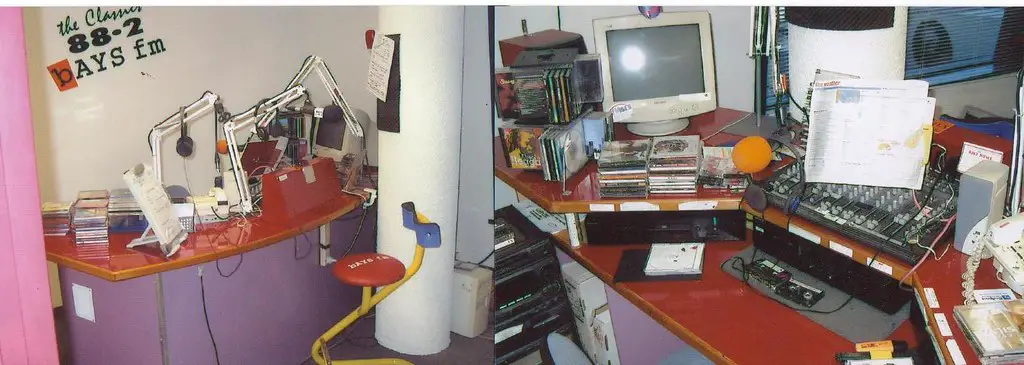Weather conditions have a significant impact on two-way radio signals – something we often take for granted. But when you’re out in the wild using your radio, a storm can cause interference. Rain, snow, fog or extreme temperatures can weaken the signal or make it drop out altogether.
How does this happen? Radio signals travel through the atmosphere and can be scattered or absorbed by moisture, ice particles or thick air. NOAA research shows that heavy rain can reduce the range of UHF radios by 30%. That means a 5-mile range can become 3.5 miles.
So, if you experience signal issues while using your radio during bad weather, don’t panic! It’s just nature reminding us that technology isn’t invincible.
Understanding Two-Way Radio Signals
Two-way radio signals are vital for great communication in multiple industries and scenarios. They provide fast and dependable communication between two or more people, supplying info. Let’s take a look at some essential details of understanding two-way radio signals:
| Aspect | Description |
|---|---|
| Frequency | Different two-way radio systems run on specific frequency ranges. |
| Channels | Two-way radios have multiple channels to separate conversations. |
| Signal Strength | The signal power decides the range and clarity of communication. |
| Interference | Environmental factors or other devices can affect radio signals. |
| Battery Life | Long battery life is key, making sure no disruptions to communication. |
These are only a few key points regarding understanding two-way radio signals well.
Pro Tip: To get the most out of signal strength, select an open channel free from interference and guarantee your batteries are totally charged before going into the field for frictionless communication.
The Impact of Weather Conditions on Two-Way Radio Signals
Weather can have a significant effect on two-way radio signals. Nature likes to throw a curveball when it comes to communication. Rain stops signals from travelling, causing static and signal loss. Fog and snow are also enemies of radio signals. Fog has tiny water droplets in the air which obstruct the waves. Snow crystals scatter and absorb radio waves.
During World War II, lousy weather caused confusion among pilots. High-frequency signals were bouncing off layers and travelling way further than intended.
Remember that Mother Nature can affect communication when using two-way radios in bad weather!
Expert Advice and Tips for Maintaining Reliable Communication in Any Weather
Communication is an everyday necessity. It is even more critical during unpredictable weather. This article gives expert advice for reliable communication in any weather.
- Purchase good two-way radios. Look for ones designed for the outdoors, with features like water resistance and sturdiness.
- Position the antenna correctly. This will help signal strength. Avoid tall buildings or dense vegetation that may block the signal.
- Use proper radio etiquette. Clear, concise and slow speech is best. Avoid jargon.
Did you know temperature inversions can affect radio signals? Warm air traps cooler air near the ground, forming an inversion layer that weakens signals. So don’t miss out on info due to poor communication. Follow expert advice and stay up-to-date with tech.
To sum it up, invest in good two-way radios, take antenna placement seriously, practice good radio etiquette, and stay aware of temperature inversions. This way, you’ll be able to communicate in any weather.
Conclusion
Wireless communication is all around us! But, it can be affected by the weather. Rain, snow, and fog can all weaken or distort signals. Temperature, too, can cause radios to malfunction. It’s vital to consider the weather when using two-way radios. Invest in high-quality ones. Do regular maintenance and checks. This’ll make sure you never miss a message in bad weather!
Frequently Asked Questions
Q: Why is my two-way radio signal weaker during bad weather?
A: Oh, mother nature loves to mess with our signals! Bad weather conditions like rain, snow, or even thick clouds can weaken the radio signal by scattering and absorbing the radio waves. It’s like trying to have a clear phone call while someone constantly shouts in the background!
Q: Can I blame thunderstorms for my crackling two-way radio signal?
A: Absolutely! Thunderstorms are the ultimate villains for radio signals. The electrical charges in the storm can interfere with the radio waves, causing that annoying crackling sound. So, when you hear static during a storm, don’t blame your equipment – blame those mischievous lightning bolts!
Q: Is there any hope for my two-way radio during a windy day?
A: Hang in there, partner! Windy conditions can affect the signal, but not as much as rain or thunderstorms. The gusts can cause some signal loss, especially if there are obstacles like tall buildings or trees in the way. So, you might experience a slight drop in range or clarity, but it’s nothing a good old antenna repositioning can’t fix!
Q: Can I use my two-way radio during a snowstorm?
A: Well, you might face some challenges during a snowstorm, but it’s not a complete no-go. The heavy snowfall can absorb and reflect radio waves, reducing their strength and causing signal loss. However, if you’re out in the winter wonderland and need to stay connected, using a radio with higher wattage or finding a clear line of sight can help you brave the snowy conditions!
Q: Does the distance between radios affect the impact of weather conditions?
A: No doubt about it! The distance between radios affects how weather conditions affect your signal. The farther apart the radios are, the weaker the signal will be, especially during inclement weather. So, even in good weather, you might face more challenges trying to transmit over a long distance. Stay close and keep those radios snug folks!
Q: Can I blame my two-way radio woes solely on the weather?
A: As tempting as it is, it’s unfair to blame it all on the weather. While bad weather can undoubtedly impact your signal, there might be other factors at play too. Interference from buildings, power lines, or even other electronic devices can also cause signal issues. So, don’t buy a sunny day, blame the rain – it’s worth considering all possible culprits!



